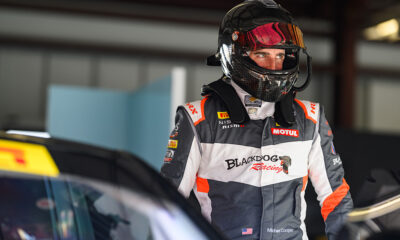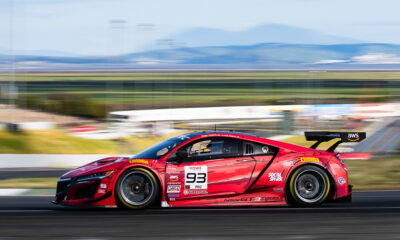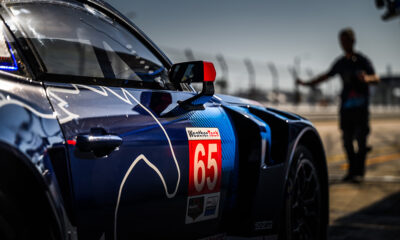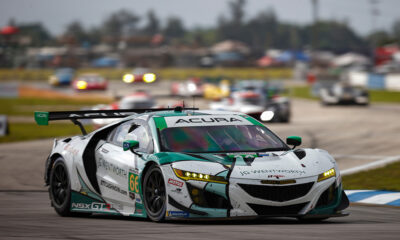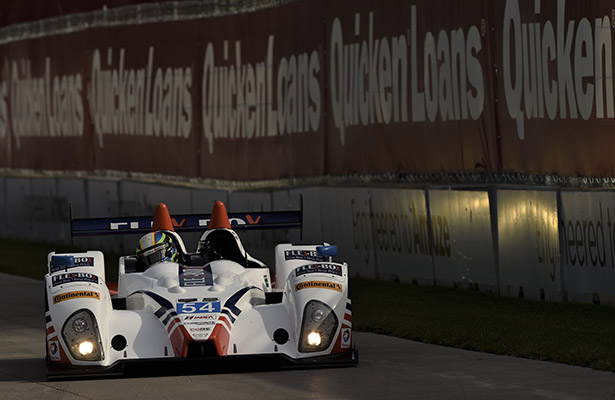
Photo: IMSA
I haven’t been to Detroit since 2012 when I drove a DP car in GRAND-AM. There were a couple corners that were different: Turn Three, Four and Five had changed. It was good though, because I think they made it a bit better.
They also repaved part of the track, but it didn’t seem to be any smoother than it was the last time I was there, which surprised me.
We did the track walk, looked at the new concrete and thought it would be smooth. Obviously, whenever you hear anybody talk about repaving a race track, you expect them to be smoother.
It was really surprising to go out and experience how bumpy it was in that first practice. It was pretty rough down the back straight and we had to make some adjustments to our race car to get it to stay on the track.
We had mixed practice session, which made getting acclimated to the track a challenge. Jon had never been to Detroit before. We’d never been to Detroit with the PC cars before and I had a couple new corners to learn myself; that combined with the variable conditions on Friday means we only really had that first hour and half practice session to get a good read on the track and the car.
It was actually fortunate that it rained on the second practice though, because we were unsure what the weather would be like Saturday, so we got some track time in the wet and the dry and could be prepared for whatever Saturday brought.
Jon’s incident at the start of the race was unfortunate. He just got caught up in the accordion effect leading up to the start. You do enough starts and something like this is inevitable.
By default we’re starting behind all the Prototype cars and the further back you are, the greater the risk of the accordion effect wreaking havoc on your start.
Unfortunately, we were caught out by it this time. I remember doing a lot of starts in my NASCAR days, being in the middle or back of the pack on a restart and those accordion-effect accidents happened all the time. It’s part of racing and part of being aggressive on the start.
With the incident at the start, we had to come down pit road and change the left front suspension out. The guys did an amazing job getting that changed quick and getting Jon back going.
After that we were in damage control mode, where we just wanted to turn laps, put ourselves in a good position and not get involved in anybody else’s incidents. We wanted to collect the maximum amount of points we could.
For my stint, it was straightforward. I had to be super patient and smart and stay out of other people’s races.
The weather during my stint proved to be a challenge though. There were times when it was really coming down and we thought we needed to put rain tires on, but then the other half of the track was pretty dry. It was mixed conditions and for us, we were hoping to do something different than everyone else and maybe get a lap or two back.
We were pretty much committed to staying out and waiting out the weather. We didn’t think it was going to be anything more than pop-up showers and we were hoping that maybe some other teams would come in, put rain tires on, then realize they needed to come back in and put dry tires on.
That didn’t happen. Everyone stayed on slicks, which says a lot about the tire Continental gives us considering some of the standing water we encountered.
We’ve certainly had an interesting start to the season. We got three second-place finishes and now a fourth at Detroit. I think when you step back and look at it, we’re leading the championship and that’s what we’re here to do.
Obviously, we’d hoped to have a better start to the season, but that’s just part of racing. Things happen, you get caught up in incidents, like we saw at Daytona (I thought we had that one on lockdown).
That’s just the way it goes in competitive racing. I think what separates some of the teams is how you bounce back from those incidents. That’s what makes CORE so successful over the last five years; they’re able to recover from a rough race.
That’s a sign of how strong a team is. I think there are a lot of teams that can win races, but you win championships by bouncing back.



















